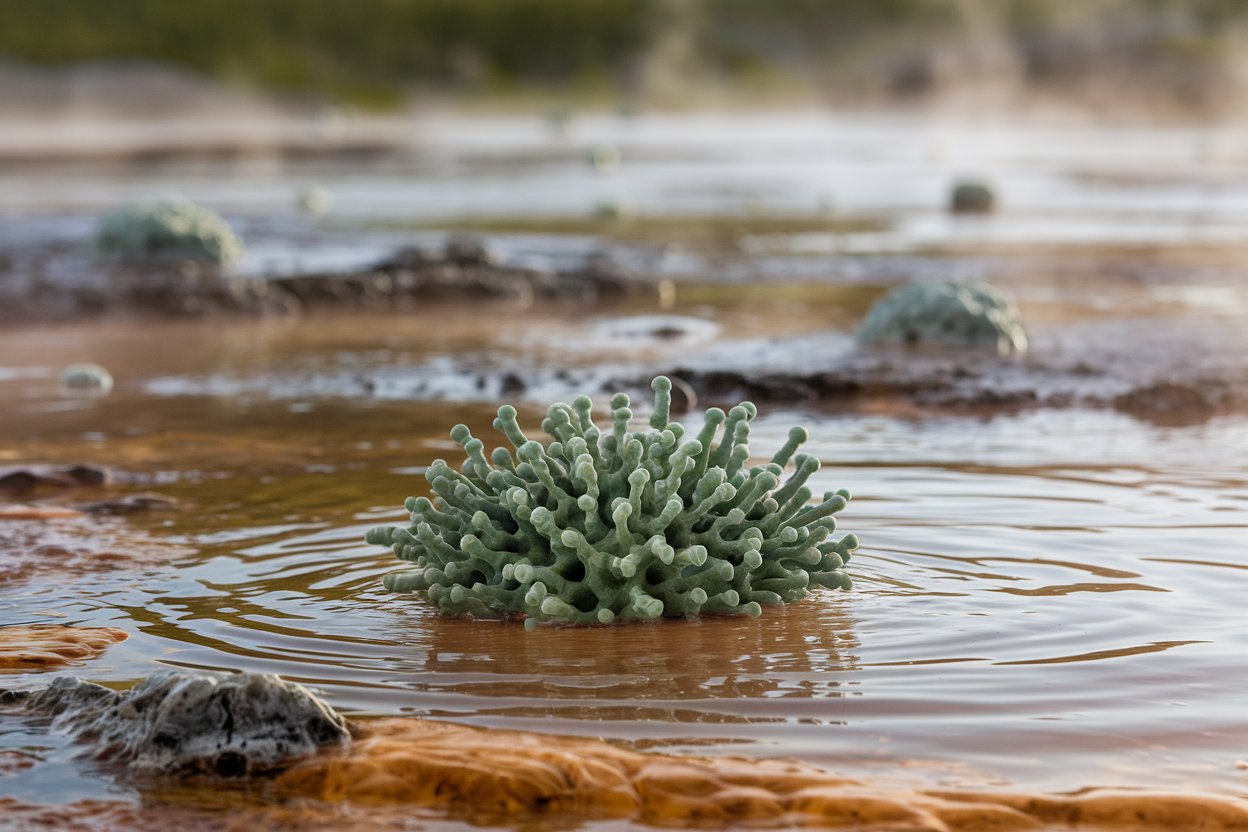
Thermophiles are fascinating microorganisms that thrive in extreme heat, often found in environments like hot springs, hydrothermal vents, and even compost heaps. These heat-loving organisms can survive and flourish at temperatures that would be lethal to most life forms. But what makes them so special? Thermophiles possess unique enzymes and proteins that remain stable and functional at high temperatures, allowing them to perform essential biological processes. This remarkable adaptation not only piques scientific curiosity but also holds potential for various industrial applications, such as in biotechnology and pharmaceuticals. Dive into these 31 intriguing facts about thermophiles to uncover the secrets of these extraordinary heat enthusiasts and their incredible resilience.
What Are Thermophiles?
Thermophiles are fascinating organisms that thrive in extremely hot environments. These heat-loving microbes can be found in places where most life forms would perish. Let's dive into some intriguing facts about these extraordinary organisms.
-
Thermophiles are microorganisms that thrive at temperatures between 41°C and 122°C (106°F and 252°F).
-
They are often found in hot springs, hydrothermal vents, and geothermal soils.
-
Thermophiles can be bacteria, archaea, or fungi, showcasing a wide range of diversity.
-
The term "thermophile" comes from Greek words meaning "heat-loving."
-
Some thermophiles can survive in temperatures as high as 122°C (252°F), which is hotter than boiling water.
How Do Thermophiles Survive Extreme Heat?
Thermophiles have unique adaptations that allow them to withstand extreme temperatures. These adaptations are key to their survival and functionality.
-
Their proteins are more stable at high temperatures, preventing denaturation.
-
Thermophiles have specialized enzymes called "thermozymes" that function optimally at high temperatures.
-
Their cell membranes contain heat-resistant lipids, which help maintain integrity in hot environments.
-
DNA in thermophiles is protected by special proteins that prevent heat-induced damage.
-
Some thermophiles produce heat-shock proteins that help refold damaged proteins.
Where Can You Find Thermophiles?
Thermophiles inhabit some of the most extreme environments on Earth. These locations are often inhospitable to most other life forms.
-
Yellowstone National Park's hot springs are famous for their thermophile populations.
-
Deep-sea hydrothermal vents are home to many thermophilic organisms.
-
Geothermal areas in Iceland and New Zealand also host thermophiles.
-
Some thermophiles live in man-made environments like compost heaps and industrial hot water systems.
-
Volcanic areas, such as those in Hawaii, are prime habitats for thermophiles.
Why Are Thermophiles Important?
Thermophiles play crucial roles in various scientific and industrial applications. Their unique properties make them valuable in many fields.
-
Thermophilic enzymes are used in industrial processes like laundry detergents and biofuel production.
-
They are essential in the study of extremophiles, helping scientists understand life's limits.
-
Thermophiles contribute to the decomposition of organic matter in composting.
-
Their enzymes are used in molecular biology techniques, such as PCR (Polymerase Chain Reaction).
-
Thermophiles help in bioremediation by breaking down pollutants in hot environments.
Fun Facts About Thermophiles
Thermophiles are not just scientifically significant; they also have some fun and surprising aspects.
-
The bright colors of some hot springs are due to thermophilic bacteria and archaea.
-
Thermophiles have been found in ancient rocks, suggesting they have existed for billions of years.
-
Some thermophiles can withstand radiation and acidic conditions, making them extremophiles.
-
The study of thermophiles has inspired the search for life on other planets, like Mars.
-
Thermophiles have unique metabolic pathways that allow them to utilize unusual energy sources.
The Future of Thermophile Research
Research on thermophiles continues to uncover new insights and applications. These organisms hold great potential for future scientific advancements.
-
Scientists are exploring thermophiles for their potential in developing new antibiotics.
-
Thermophiles are being studied for their role in carbon cycling and climate change.
-
Advances in genetic engineering may allow us to harness thermophiles for sustainable energy production.
-
Thermophiles could play a role in space exploration, helping us understand how life might survive on other planets.
-
Ongoing research aims to discover new thermophiles with unique properties and applications.
-
The study of thermophiles continues to challenge our understanding of life's adaptability and resilience.
The Final Word on Thermophiles
Thermophiles are fascinating organisms that thrive in extreme heat. Found in places like hot springs, hydrothermal vents, and even compost heaps, these heat-loving microbes play crucial roles in ecosystems and industry. They help break down organic matter, contribute to nutrient cycles, and even assist in scientific research and biotechnology.
Their unique enzymes, stable at high temperatures, are invaluable for industrial processes, including the production of biofuels, pharmaceuticals, and food products. Understanding thermophiles not only broadens our knowledge of life's adaptability but also opens doors to innovative applications.
So next time you think about extreme environments, remember these incredible organisms. They’re not just surviving; they’re thriving and contributing to advancements that benefit us all. Thermophiles truly showcase the resilience and versatility of life on Earth.
Was this page helpful?
Our commitment to delivering trustworthy and engaging content is at the heart of what we do. Each fact on our site is contributed by real users like you, bringing a wealth of diverse insights and information. To ensure the highest standards of accuracy and reliability, our dedicated editors meticulously review each submission. This process guarantees that the facts we share are not only fascinating but also credible. Trust in our commitment to quality and authenticity as you explore and learn with us.
